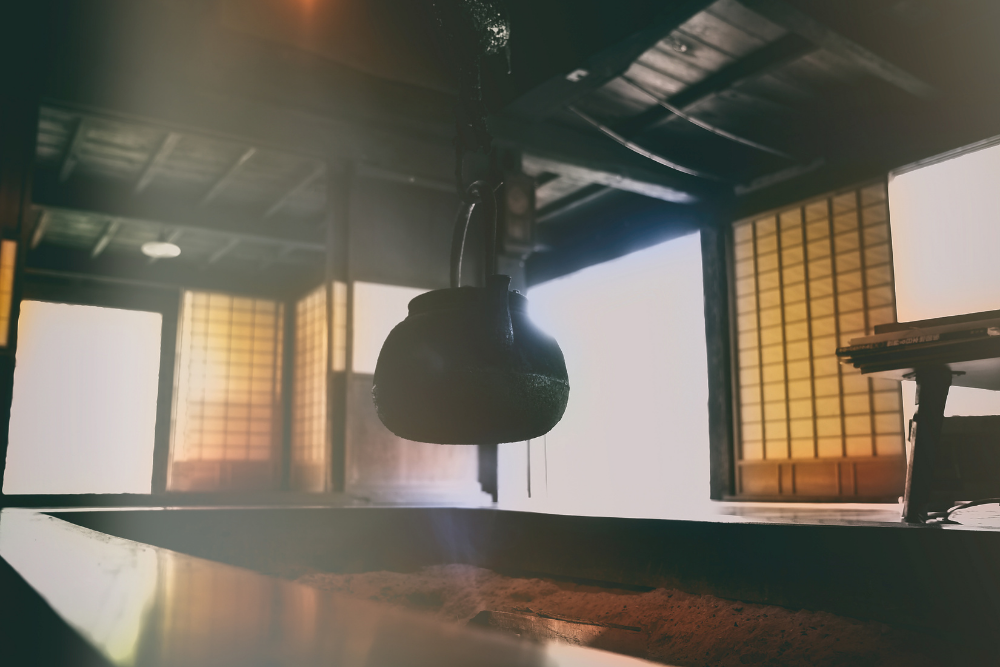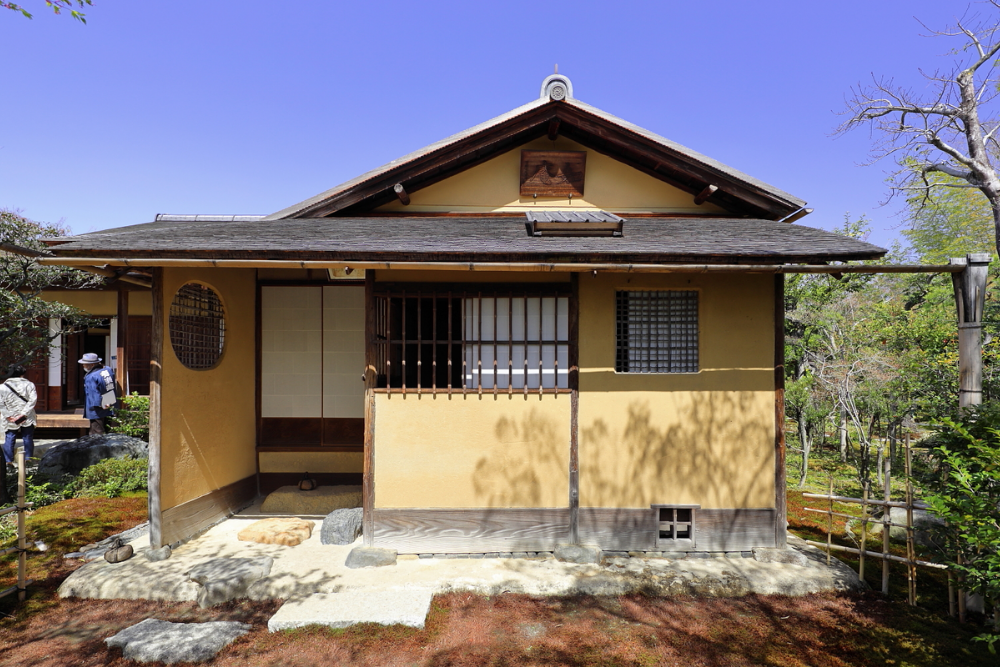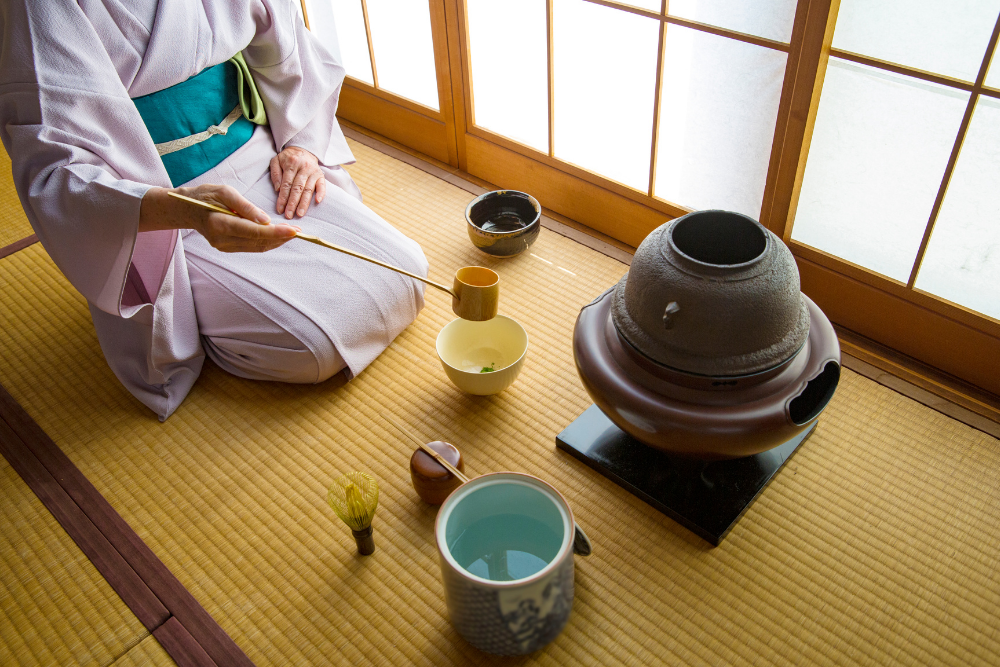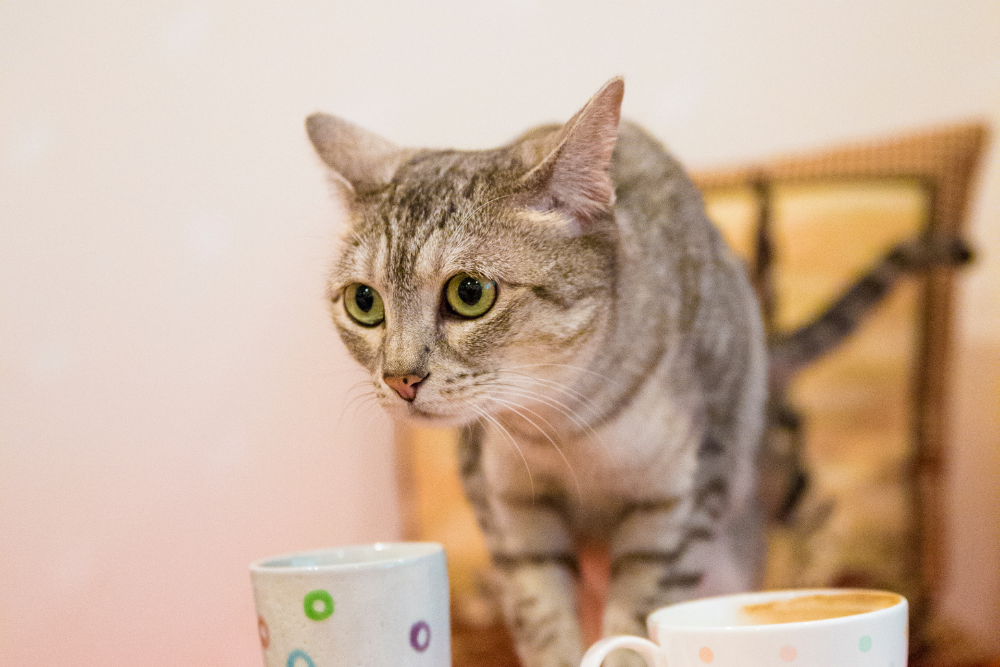Japan’s traditional tea houses offer a unique glimpse into the country’s rich cultural heritage, where tea is more than just a beverage—it is an art form, a ritual, and a spiritual experience. Rooted in Zen Buddhism, the Japanese tea ceremony, or chanoyu, emphasizes harmony, respect, purity, and tranquility. Whether you’re visiting a historic chashitsu (tea room) in Kyoto or a serene tea house in a garden, this guide will help you experience Japan’s tea culture to the fullest.
1. The History and Significance of Tea Houses in Japan
Tea was introduced to Japan from China in the 9th century, but it wasn’t until the 16th century that the tea ceremony was refined into a formal practice by Sen no Rikyū, the most influential tea master in Japanese history. His philosophy emphasized simplicity, natural beauty, and mindfulness, shaping the wabi-sabi aesthetic that defines tea houses today.
Tea houses are typically designed to create a sense of tranquility, with minimalist architecture, tatami flooring, and a garden path leading to the entrance. The experience of entering a tea house is meant to be a temporary escape from the distractions of everyday life.
2. Different Types of Tea Houses in Japan
a) Traditional Tea Houses (Chashitsu)
These small, rustic tea rooms are typically found in temples, gardens, or historical districts. The tea ceremony performed here follows strict etiquette, with the host preparing and serving matcha (powdered green tea) in a deeply ritualistic manner.
Best places to experience:
- Jō-an Tea House (Inuyama, Aichi) – One of Japan’s most famous historical tea houses
- Shōkin-tei (Tokyo’s Imperial Palace) – An elegant tea house within the palace grounds
- Tai-an (Kyoto) – Designed by Sen no Rikyū, this tea house represents the essence of wabi-sabi
b) Public Tea Houses in Gardens
Many Japanese gardens have open tea houses where visitors can enjoy a casual tea experience while admiring seasonal scenery. These tea houses often serve matcha with wagashi (Japanese sweets).
Best places to experience:
- Shinjuku Gyoen Tea House (Tokyo) – A beautiful setting in one of Tokyo’s largest parks
- Kenrokuen Garden Tea House (Kanazawa) – Experience matcha in one of Japan’s top three gardens
- Katsura Imperial Villa Tea House (Kyoto) – A refined tea house overlooking a picturesque garden
c) Modern Tea Houses and Cafés
While staying true to tradition, some modern tea houses blend contemporary aesthetics with classic tea culture, making them more accessible for casual visitors.
Best places to experience:
- Saryo Tsujiri (Kyoto, Tokyo, Fukuoka) – A well-known tea café serving high-quality matcha-based sweets and drinks
- Sakurai Tea Experience (Tokyo) – A contemporary tea salon offering a variety of Japanese teas in an intimate setting
- GEN GEN AN Phantom (Tokyo) – A hip, modern take on the tea house, experimenting with different tea styles
3. The Japanese Tea Ceremony: What to Expect
Attending a Japanese tea ceremony is a unique and highly structured experience. While the full ceremony can take hours, there are shorter simplified versions for visitors.
a) The Setting
- The tea room is designed to be peaceful, with natural materials, soft lighting, and simple decorations.
- Guests enter through a low door, symbolizing humility and leaving behind social status.
- A hanging scroll (kakemono) and seasonal flower arrangement add to the serene ambiance.
b) The Ritual
- Cleansing the Utensils – The host carefully cleans the tea bowl, whisk, and scoop.
- Preparing the Matcha – Using a bamboo whisk, the host whisks powdered green tea with hot water until frothy.
- Serving the Tea – The bowl is presented to the guest with a bow, and guests must rotate the bowl before drinking as a sign of respect.
- Enjoying Wagashi – Traditional sweets balance the bitterness of the tea.
c) Etiquette Tips
- Bowing is an important part of the ceremony to show gratitude.
- Speak softly and minimally to maintain the tranquil atmosphere.
- When drinking, take three sips and wipe the rim of the bowl before passing it to the next guest.
4. Seasonal Tea House Experiences
Japanese tea houses are best enjoyed throughout the seasons, each offering a unique atmosphere:
- Spring – Cherry blossom-themed sweets and tea, best experienced in gardens like Korakuen (Okayama).
- Summer – Cold matcha or green tea is served, with open-air tea rooms providing a cool retreat.
- Autumn – Tea houses showcase stunning maple foliage, particularly in Kyoto’s temples.
- Winter – A cozy tea house with a warm cup of matcha offers a serene escape from the cold, as seen in Kenrokuen Garden (Kanazawa).
5. How to Visit a Traditional Tea House in Japan
Where to Book a Tea Ceremony
Many tea houses require reservations, especially for formal ceremonies. Here are a few places to consider:
- Kodaiji Temple Tea Ceremony (Kyoto) – A Zen temple offering an authentic experience
- Happo-en Tea House (Tokyo) – A beautifully preserved Edo-era tea house
- Camellia Tea House (Kyoto) – A popular choice for beginners, with English explanations
Costs and Accessibility
- Casual tea experiences in gardens and modern tea cafés cost around ¥500–¥1,500.
- Formal tea ceremonies typically range from ¥3,000–¥8,000, depending on the setting and duration.
Conclusion
Visiting a traditional Japanese tea house is more than just drinking tea—it is a deeply cultural and meditative experience that connects you to centuries-old traditions. Whether you choose a formal tea ceremony, a casual tea house in a garden, or a modern twist on tea culture, you’ll gain a newfound appreciation for Japan’s art of hospitality and mindfulness.
Which tea house experience would you love to try?












